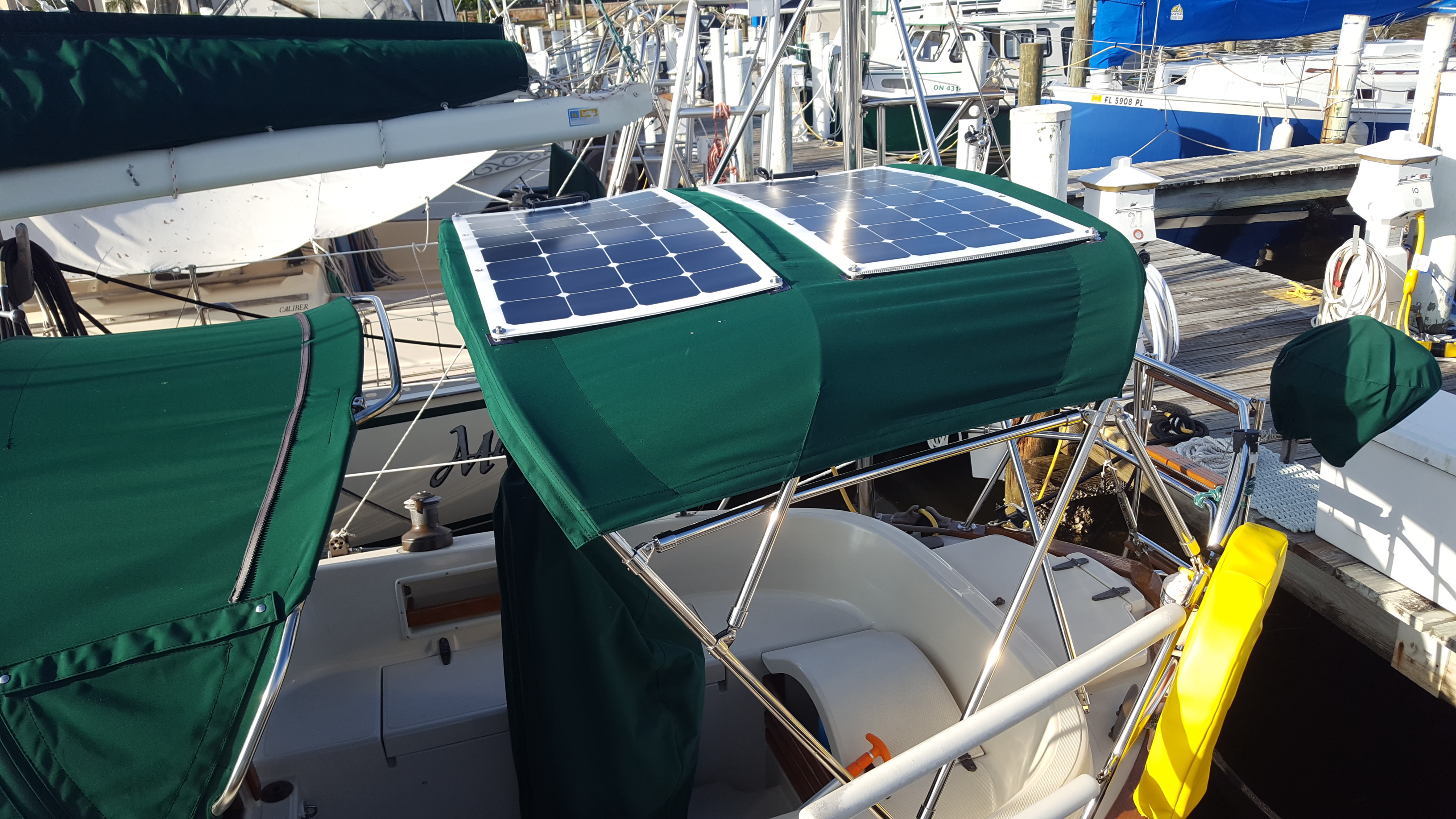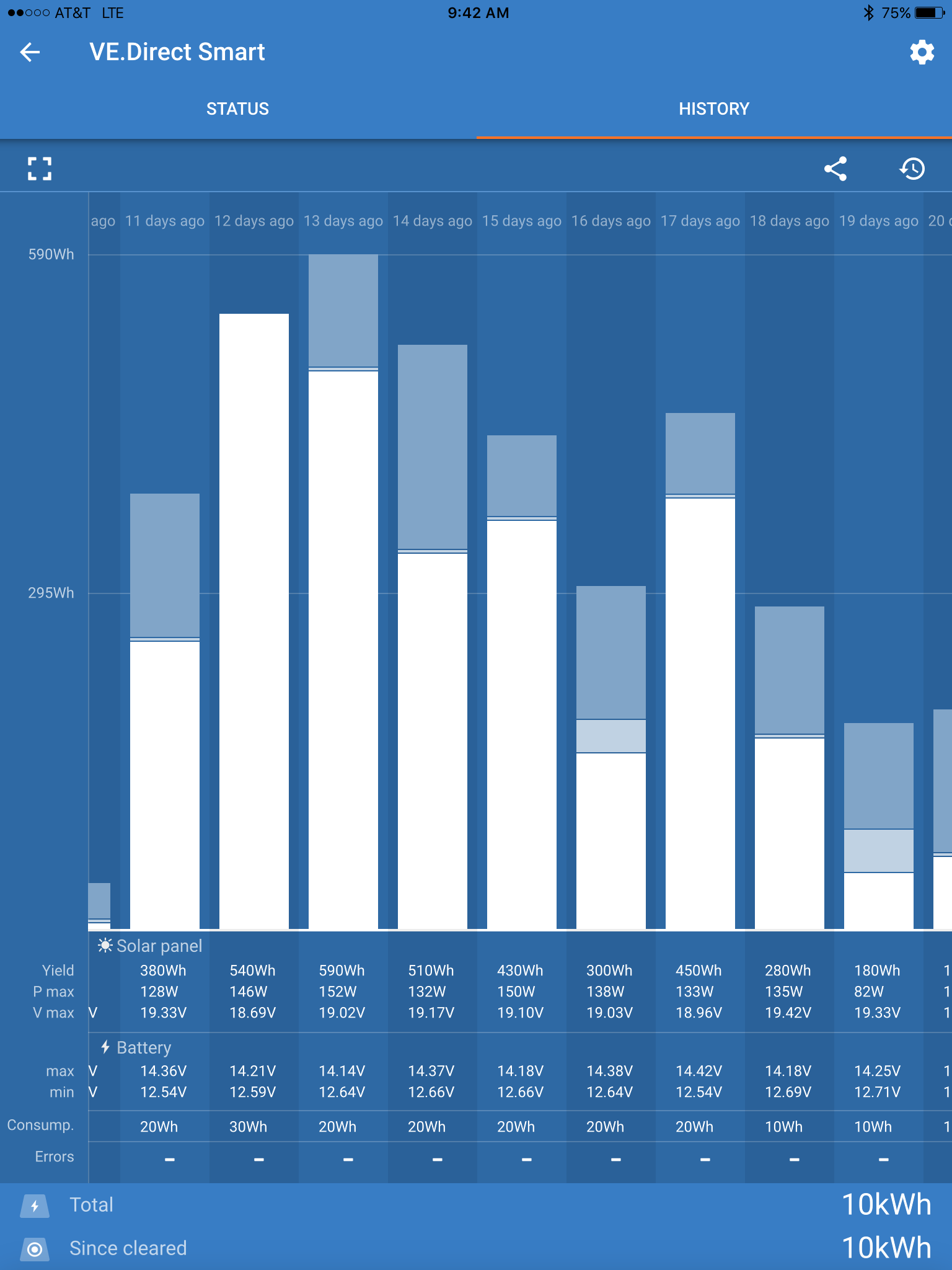As we began thinking of outfitting Eileen for extended cruising, we knew that we wanted some kind of supplemental power in the form of solar panels. From everything we had read, solar seemed easier, more cost effective, more efficient and simpler. We are pretty frugal energy users at anchor with our biggest draw being our old Adler Barbour refrigerator which draws about 6 amps when the compressor kicks on. We saved this project till the end of our “refit”, as the technology and prices seem to evolve almost monthly. Unfortunately, this also meant we were feeling the money pinch more and did not want to spend a fortune on solar panels.

Eileen is very limited on space, so we decided to see what we could get that would fit on the bimini, as this seemed the easiest and most logical mounting point. After doing some research, it seems like to get the most energy for the size of the panel that most experts recommend buying panels with Sunpower back wired cells. Most experts also seem to believe that rigid panels will hold up much longer in a marine application. Due to the clearance between the boom and bimini, we were in the market for thinner semi-rigid/flexible panels. The most popular brands for perceived quality that use genuine Sunpower cells seemed to be Solara and Solbian. However, we got sticker shock and decided to dig deeper.

We were referred to a small independent business called Hotwire Enterprises. I visited and consulted with this husband and wife team at their combination home – mad scientist’s lab – workshop near Sarasota, Florida. They were amazingly knowledgeable and gracious and invited me to share the slow-cooked ribs which they had been preparing in their solar oven in the back yard. I stayed for lunch and home-made iced tea and then we went out to the shop. I left with two 100-watt Powerfree semi-flexible panels with knock-off Sunpower back wired cells for about 1/5th the price of the more pricy name brand options. Time will tell if they hold up as well, but I was assured that he has been selling these panels for years with excellent results. I paired them with a single Victron 75-15 MPPT Controller. Wiring ran from the bimini into my existing radar post (see RADAR POST project) and through the engine compartment to the batteries. Eileen carries two 4D West Marine AGM house batteries for a total of 396 amp hours, and one Group 27 AGM starting battery.
Celia and I generally end up using about 35-45 amp hours in a 24 hour period at anchor. Of course this can change if the fridge compressor comes on more frequently in the summer, or due to other factors and needs as we get further from “civilization”. We have switched all interior and about half of our exterior lights to LED. These panels have performed great at anchor in sunny weather where we went up to a week without running the engine to top off the batteries. I will update this post with more and better specs and results as we go along.

Celia is the proud owner of a Sailrite sewing machine which has doubtless paid for itself many times over. We reinforced the bimini canvas with webbing on the Sailrite and made our own custom mounts for the panels. We also added a layer of corrugated plastic under the panels for added stability. The panels can be easily removed in about 10 minutes. So far we are happy with all aspects of the project and will update our findings as we go! Please feel free to contact us if you would like to know any more about this project!

« PELICAN BAY ANCHORAGE – CAYO COSTA STATE PARK | Dry Tortugas National Park »